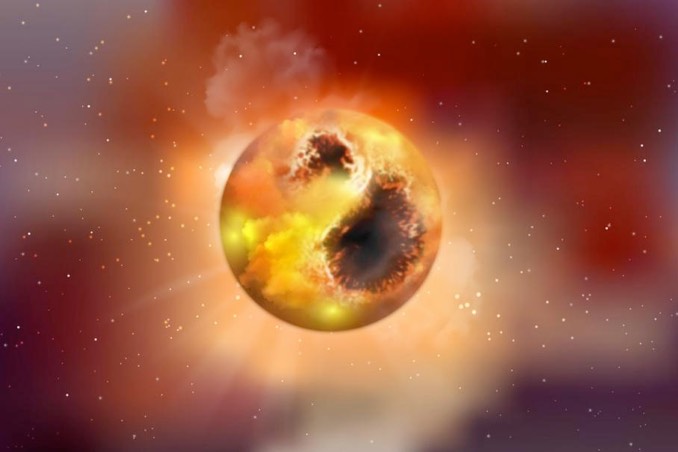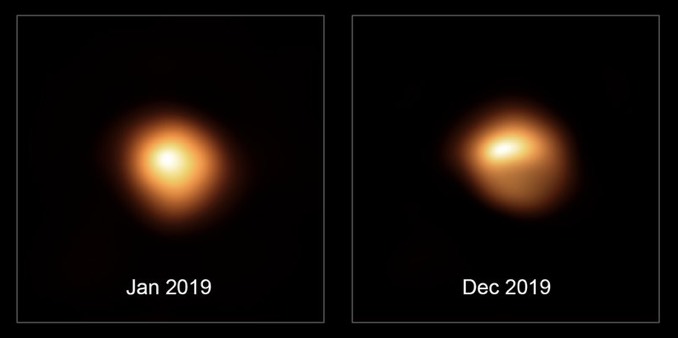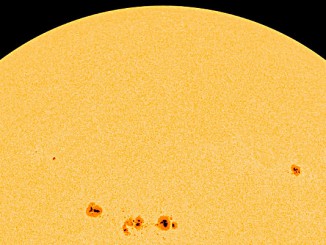
The recent, unexpectedly pronounced dimming of the red giant Betelgeuse likely was caused by huge “star spots” and not by clouds of expelled gas, researchers conclude in The Astrophysical Journal Letters.
Betelgeuse, the red star marking one of Orion the Hunter’s shoulders, is about 20 times more massive than the Sun and on the order of 1,000 times larger. If placed in the center of our solar system, its outer layers would reach almost to the orbit of Jupiter.
Between October 2019 and April 2020, Betelgeuse unexpectedly dimmed by about 40 percent. Some observers speculated the star might be on the verge of blowing up in a supernova blast. Other suggested the dimming more likely was caused by the pulsing red giants undergo as they run out of nuclear fuel. Those pulsations blow off the star’s outer layers and as the gas cools, it transitions into compounds that form light-absorbing dust.
A team led by Thavisha Dharmawardena of the Max Planck Institute for Astronomy decided to test the latter hypothesis using new and archived data from the Atacama Pathfinder Experiment – APEX – and the James Clerk Maxwell Telescope. Both observatories measure radiation in a spectral range suitable for studying interstellar dust. Such terahertz radiation is invisible to the eye.
Surprisingly, the researchers noted Betelgeuse appeared 20 percent darker even in the submillimetre wavelength range. Cool dust glows at such wavelengths, and the observations were not compatible with the presence of dust. The researchers concluded the dimming was caused by the star itself. The observed darkening in visible light and submillimetre radiation indicated an approximately 200-degree reduction in the mean surface temperature.

“However, an asymmetric temperature distribution is more likely,” said co-author Peter Scicluna from the European Southern Observatory (ESO). “Corresponding high-resolution images of Betelgeuse from December 2019 show areas of varying brightness. Together with our result, this is a clear indication of huge star spots covering between 50 percent and 70 percent of the visible surface and having a lower temperature than the brighter photosphere.”
Star spots are common in giant stars, but astronomers have never seen them at the scale implied by the Betelgeuse observations. It’s not known how long they might endure or whether they are generated in cycles like the much smaller, more familiar spots that wax and wane in the Sun’s 11-year cycle.
“Observations in the coming years will tell us whether the sharp decrease in Betelgeuse’s brightness is related to a spot cycle,” said Dharmawardena. “In any case, Betelgeuse will remain an exciting object for future studies.”



